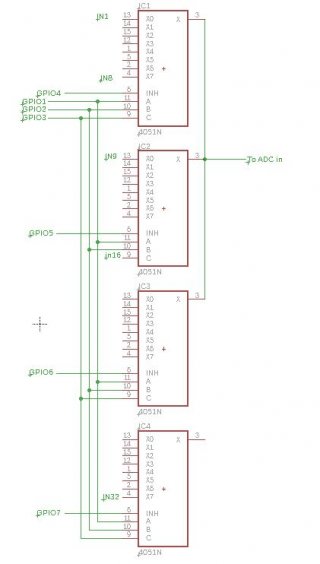Hi all -
I'm currently using a Teensy LC with a 4051 chip to feed 8 10k potentiometers into the Analog 0 pin.
I'm using this code: https://github.com/VRomanov89/AnalogMultiplexing/blob/master/AnalogMultiplexing/AnalogMultiplexing.ino
It works pretty well, except that there's a solid quarter of the potentiometer rotation that is remains maxed out at 1024 - and the lowest value doesn't seem to be at "0."
Also, there is a fair amount of jitteriness, where values do not stay still.
I'm interesting to learn about the general practice of stabilizing these aspects are.
Thanks!
I'm currently using a Teensy LC with a 4051 chip to feed 8 10k potentiometers into the Analog 0 pin.
I'm using this code: https://github.com/VRomanov89/AnalogMultiplexing/blob/master/AnalogMultiplexing/AnalogMultiplexing.ino
It works pretty well, except that there's a solid quarter of the potentiometer rotation that is remains maxed out at 1024 - and the lowest value doesn't seem to be at "0."
Also, there is a fair amount of jitteriness, where values do not stay still.
I'm interesting to learn about the general practice of stabilizing these aspects are.
Thanks!


